Overshirts – everywhere you look, men are wearing them. But despite their increasing popularity, a lot of confusion surrounds these versatile garments.
If you're like a lot of guys, you might not even be quite sure what an overshirt is. No need to worry. We have you covered!
While the overshirt is inherently a casual, cozy garment, you can wear one with style.
In this article, we'll show you how to wear men's overshirts without looking sloppy.
What Is An Overshirt?
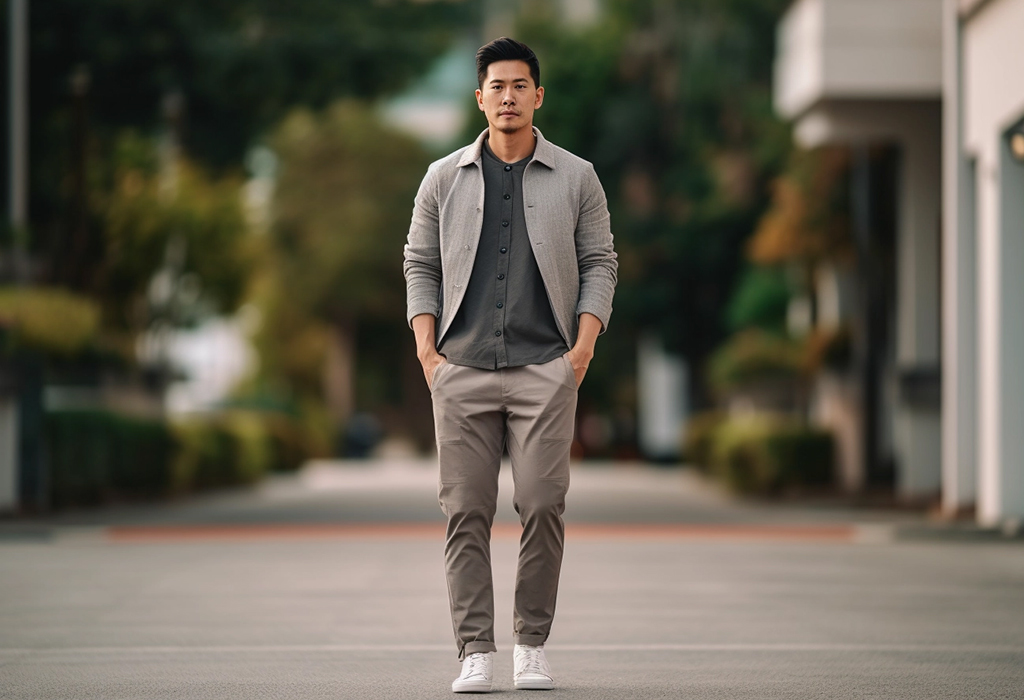
Almost any casual garment worn on the upper body made from a thicker fabric than a regular shirt and thinner fabric than a jacket could technically be called an overshirt. “Some people even lump denim jackets and quilted jackets underneath the umbrella term “overshirt.”
It's true that “overshirt” is a general term that can be applied to a wide range of garments. However, for the sake of this article, an overshirt— also sometimes called a shirt-jacket or, more rarely, a “shacket”— is a broad term that refers to a garment that isn't quite a shirt and not quite a jacket.
This article won't discuss garments, such as denim jackets and quilted jackets that already fit neatly into existing definitions. Instead, we'll focus on shirt-jacket hybrids.
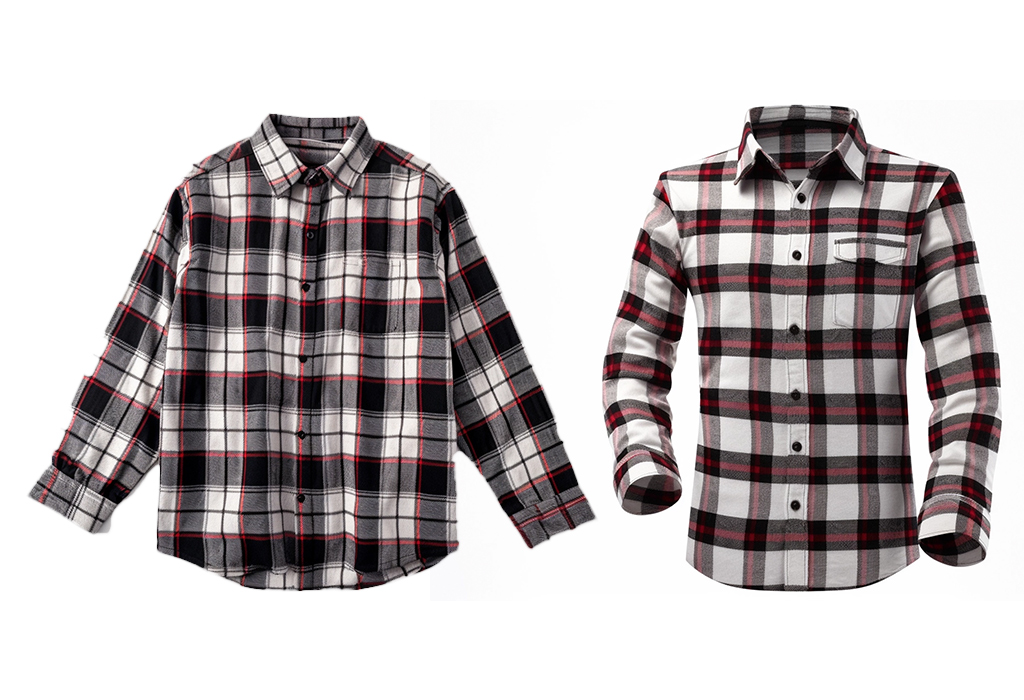
Are Overshirts Jackets?
Despite sometimes being referred to as “shirt jackets,” overshirts aren't jackets. They occupy a unique position in a man's wardrobe, not quite a jacket and not a regular shirt.
Why Wear An Overshirt?
While not a jacket, overshirts can provide the same core functions— providing added protection and warmth. Since they blur the line, workshirts are incredibly versatile.
Overshirt's heavyweight fabric is ideal for layering in colder weather. Especially when worn over a t-shirt or a hoodie, or underneath a coat, an overshirt will add needed warmth when the temperature drops.
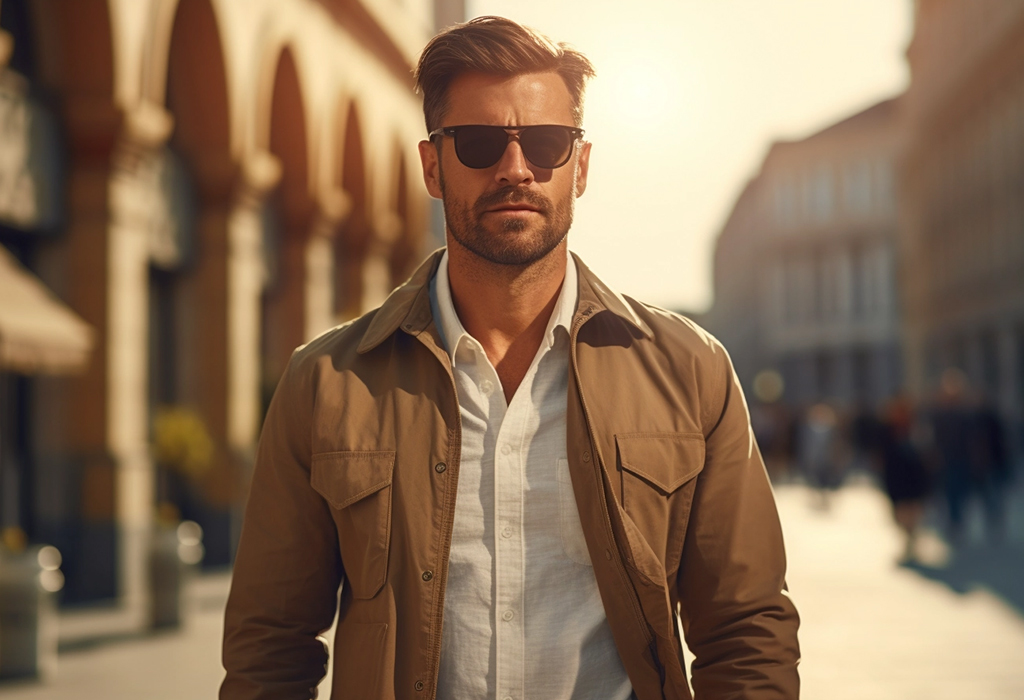
Shirt jackets are also convenient for working and relaxing outdoors. They often have several deep pockets that you can use for carrying tools or other items. Also, being thick and rugged, overshirts can help protect you against cuts and abrasions.
Not only are overshirts practical, but they also look great. When they fit well, they help to add bulk to your shoulders and upper body, making you look more muscular.
Types Of Overshirts
Overshirts come in many varieties. Therefore, things like hem length, the number of pockets, fabric type, and thickness aren't standardized. I like to think of overshirts as existing on a spectrum between shirts and jackets. Some overshirts are more “shirt-like,” and others are more “jacket-like” than others.
Below are just a few of the numerous types of overshirts:
#1 Flannel overshirts
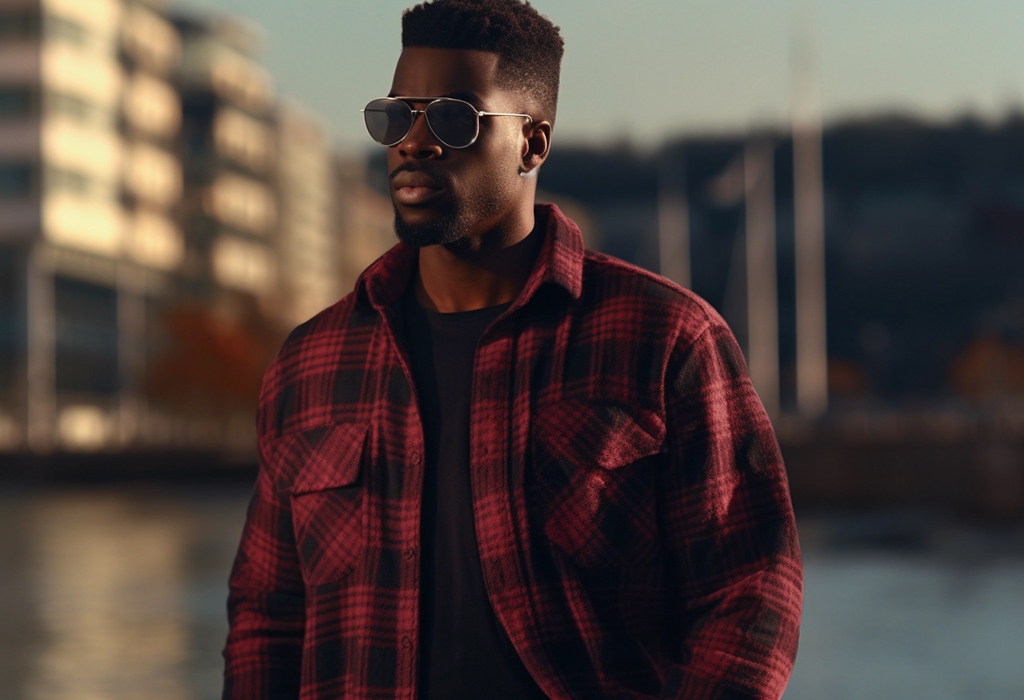
When I think of an overshirt, the first thing that comes to mind is a heavy flannel shirt-jacket with a checked or tartan pattern. A flannel overshirt is the best option if you're looking for a cozy overshirt for fall.
#2 Wool overshirts

Wool overshirts are ideal for winter. Unlike most fabrics, wool will help retain heat even when it's wet. It's also incredibly durable. A good wool overshirt is likely to cost more than other types of overshirts as wool clothing is expensive to produce.
Buy the highest quality wool shirt jacket you can afford to lower your cost per wear and save money in the long run.
#3 Military-inspired overshirts

Military-inspired overshirts often feature flapped pockets, epaulets, and snaps on the cuffs. You can think of them almost as a pared-down field jacket.
Military-inspired overshirts are most commonly found in cotton or canvas in solid colors such as navy, green, or a shade of brown.
#4 Denim overshirts
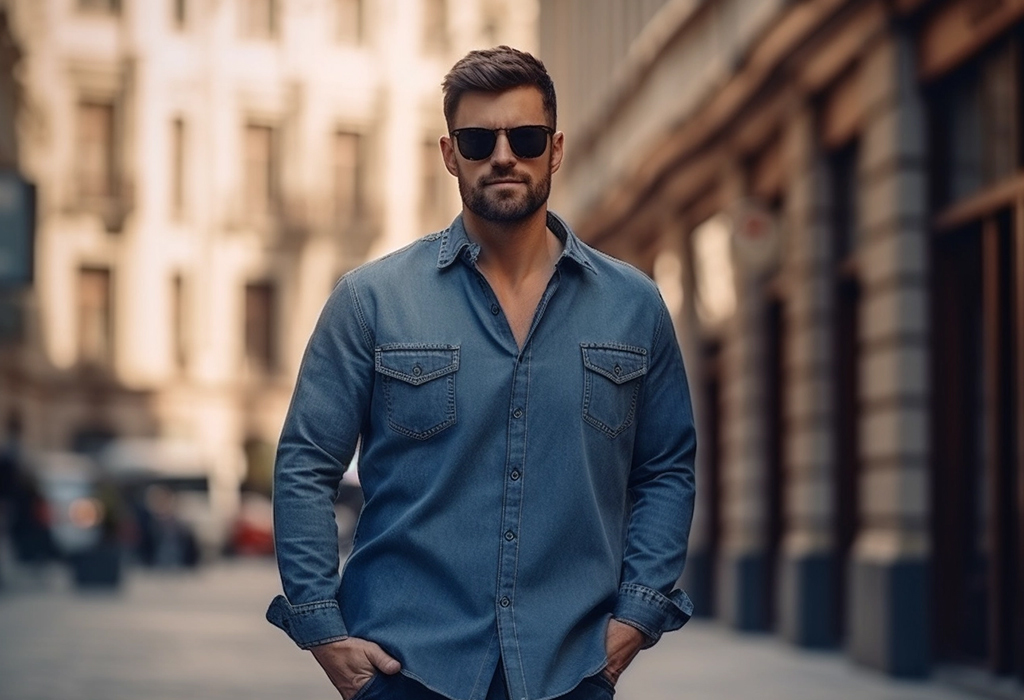
Denim is also twill-woven cotton fabric. Denim overshirts occupy the space between denim shirts and denim jackets. They usually are slightly longer than denim jackets (which should reach just below the belt). Denim overshirts usually have breast pockets.
Dark blue denim overshirts are more formal than light washes.
#5 Corduroy overshirts
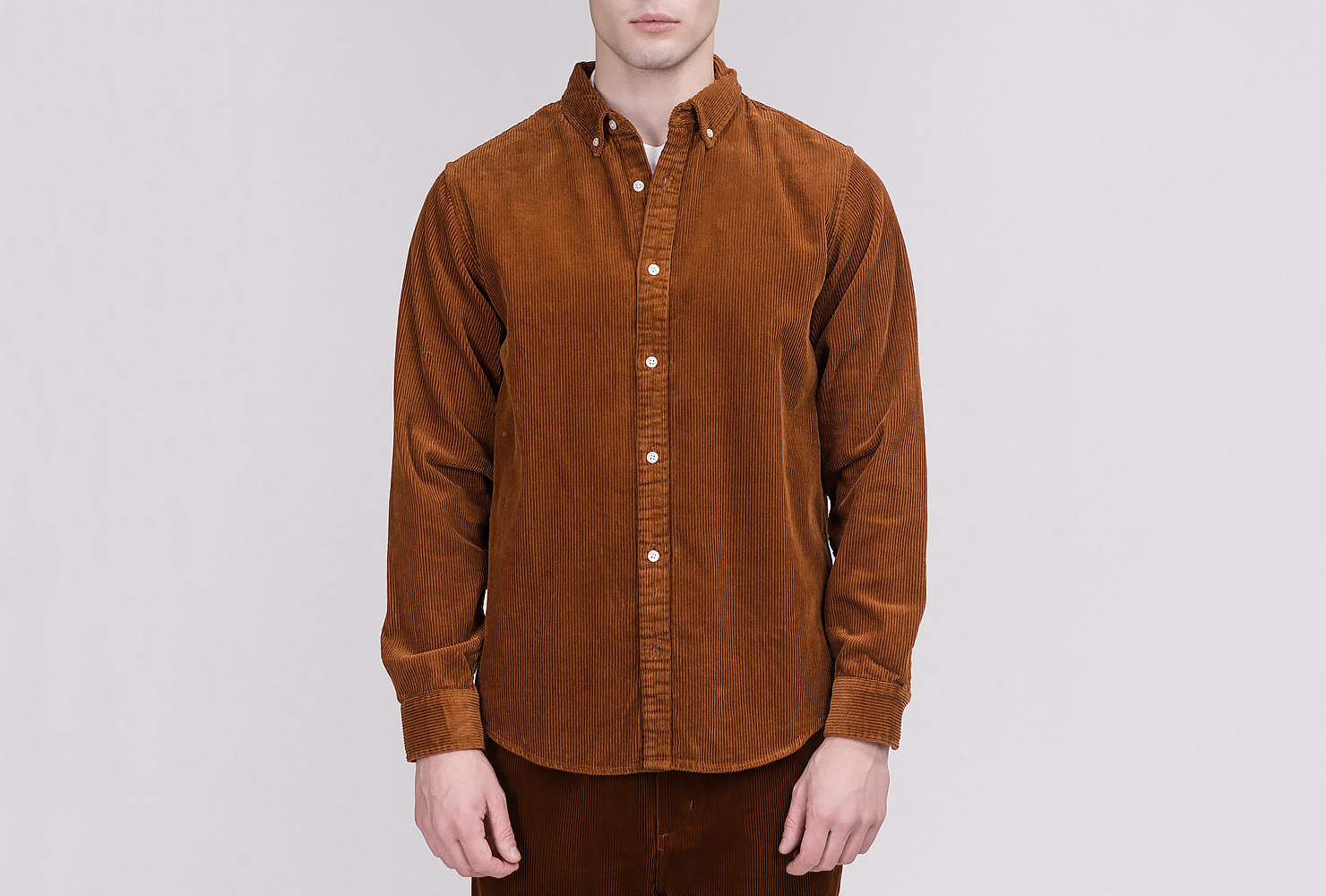
Casual and durable, corduroy is a fantastic fabric for overshirts. Corduroy, being a somewhat uncommon fabric, will help you stand out. Go for a brown corduroy shirt-jacket with double breast pockets for a classic option.
#6 Overshirts with zippers
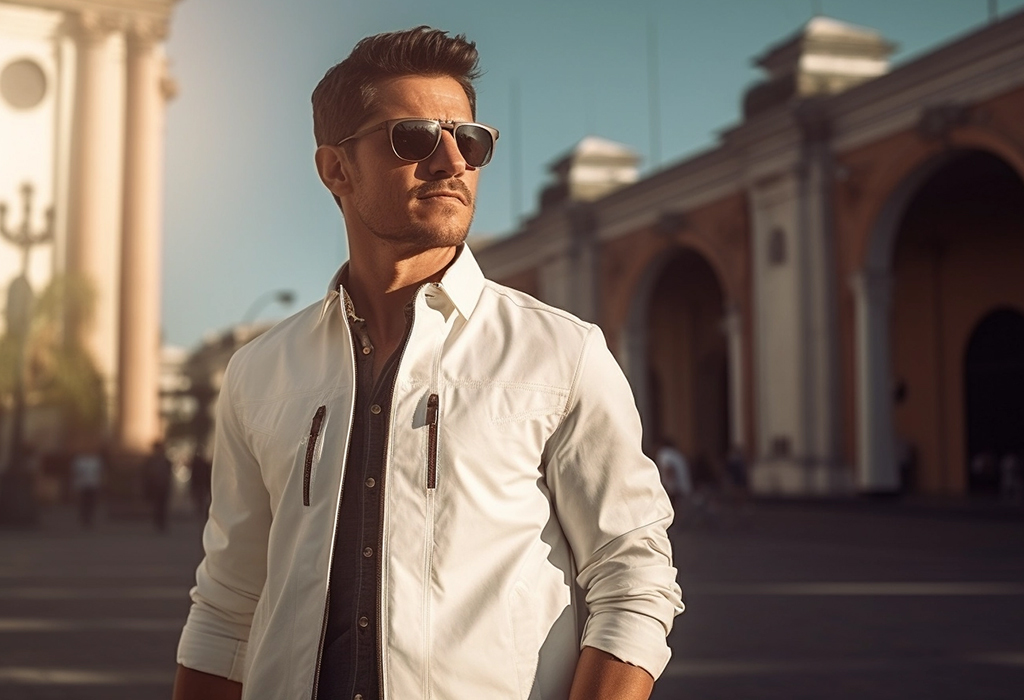
Most overshirts have buttons. Occasionally, you can find an overshirt that has a zipper in the front. These overshirts usually lean more towards the jacket end of the spectrum.
How To Choose The Right Overshirt
How should an overshirt fit?
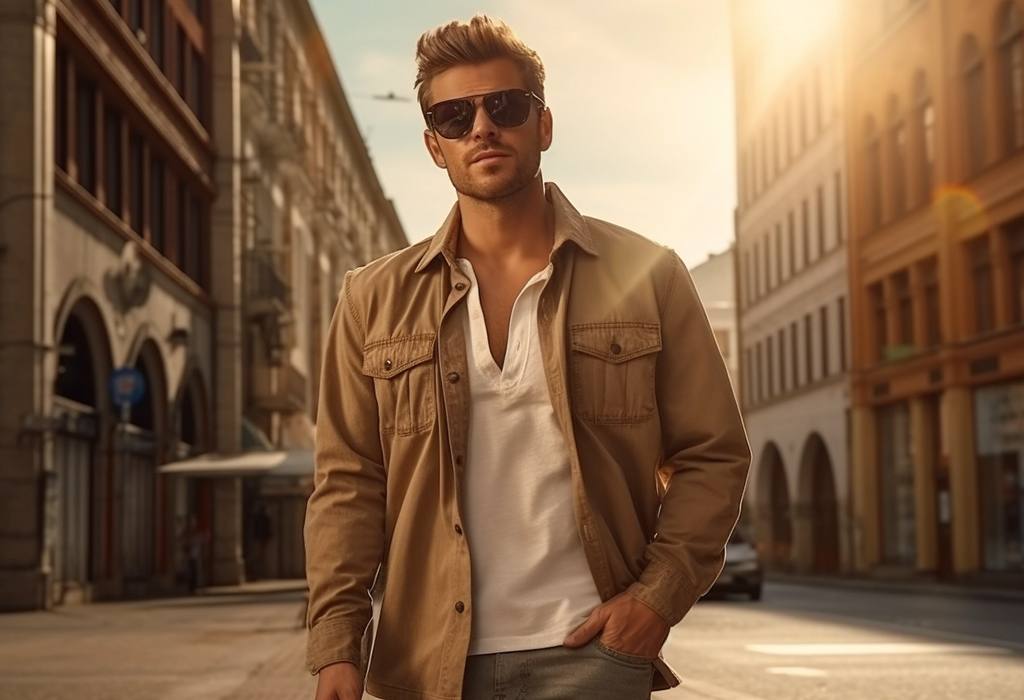
Making sure that your overshirt fits properly will make the difference between looking sloppy and looking sharp.
The ideal overshirt fit depends on how you plan on wearing it. For example, if you plan to wear your overshirt over a thick sweater, you should opt for a looser, slightly longer fit than if you intend to wear it over just a t-shirt. However, if you plan on wearing it over a t-shirt most of the time, you can go for an overshirt that fits closer to the body.
You've probably noticed that oversized shirt-jackets are “in.” However, before you jump on this trend, you should know that, in general, anything oversized is not going to be as flattering as a garment that's the correct size for you. Also, an oversized shacket will likely look dated in a few years once the trend has died out.
If you're still interested in buying oversized, avoid large, bold patterns as they can make an oversized shacket appear comically large on you. Instead, opt for plain colors or small, muted patterns.
How long should overshirts be?
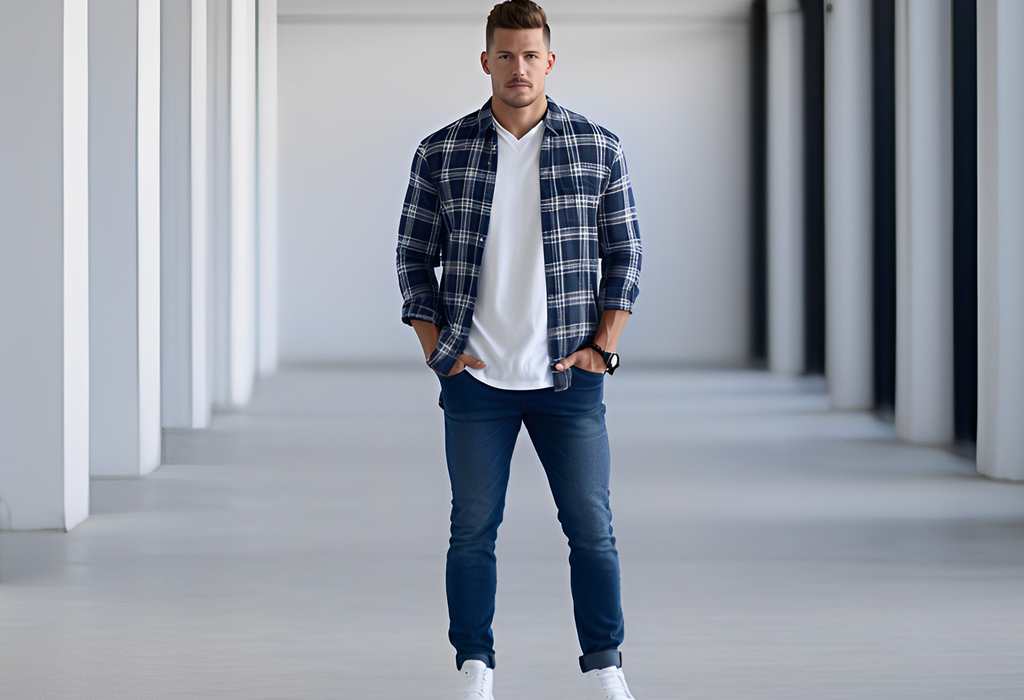
Choosing an overshirt of the proper length is a critical element of fit. An overshirt that is too long or too short will throw off your proportions— people will be able to tell that something looks “off” about your outfit even if they cannot pinpoint the cause.
Overshirts should be long enough to cover your belt. You should be able to raise your hands above your head without exposing your midriff.
The hem should extend no further than the bottom of the fly. You don't want to look like you're wearing a dress.
You want to be sure that your outermost layer is longer than the layers underneath. For example, you shouldn't wear an overshirt underneath a bomber jacket that is several inches shorter than the overshirt.
3 Rules For Wearing An Overshirt
Rule 1: Nail the fit
When it comes to dressing well, fit is king. Make sure that the fit of your overshirt is intentional. Make sure it fits the way you'd like before purchasing, or make plans to take it to a tailor.
Don't wear an oversized shirt-jacket unless you're intentionally going for an oversized look.
Rule 2: Four Layers Max

One of the best things about cold weather is that you can comfortably wear more layers than in warmer months. That said, you can wear too many layers.
Generally, three layers look better than two layers. Added layers help to give your outfit greater depth. However, when you have four or more layers, you run the risk of looking too bulky.
Rule 3: Never tuck in an overshirt
Overshirts are not made to be tucked in. They should always be worn untucked.
6 Ways To Wear An Overshirt
#1 Wearing an overshirt on its own

Many overshirts can be worn like a regular casual collared shirt. Denim, military-inspired, and flannel overshirts are best for this.
Wear a red flannel overshirt with navy chinos. Throw on a pair of brown leather chukkas and a matching belt.
#2 Wearing an overshirt with a t-shirt

An unbuttoned overshirt worn over top of a t-shirt is a great relaxed look for a relaxed evening by the campfire.
Consider wearing a classic white crew neck tee underneath a dark blue wool overshirt. Pair with gray-wash jeans and black leather sneakers. Finish this look by adding a field watch.
#3 Wearing an overshirt over a sweater
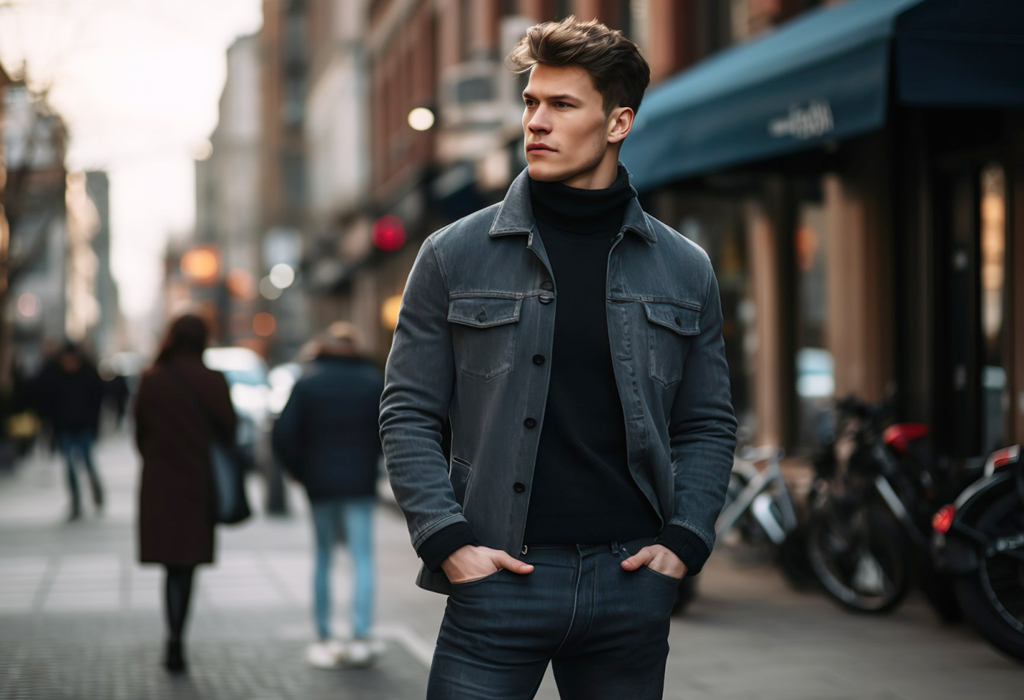
Another option is to wear a cable knit sweater underneath a shirt jacket with a zipper.
You might go with a gray sweater underneath a dark green shirt jacket. Dark blue jeans and oxblood brogues will help to elevate this look.
#4 Wearing an overshirt for manual labor
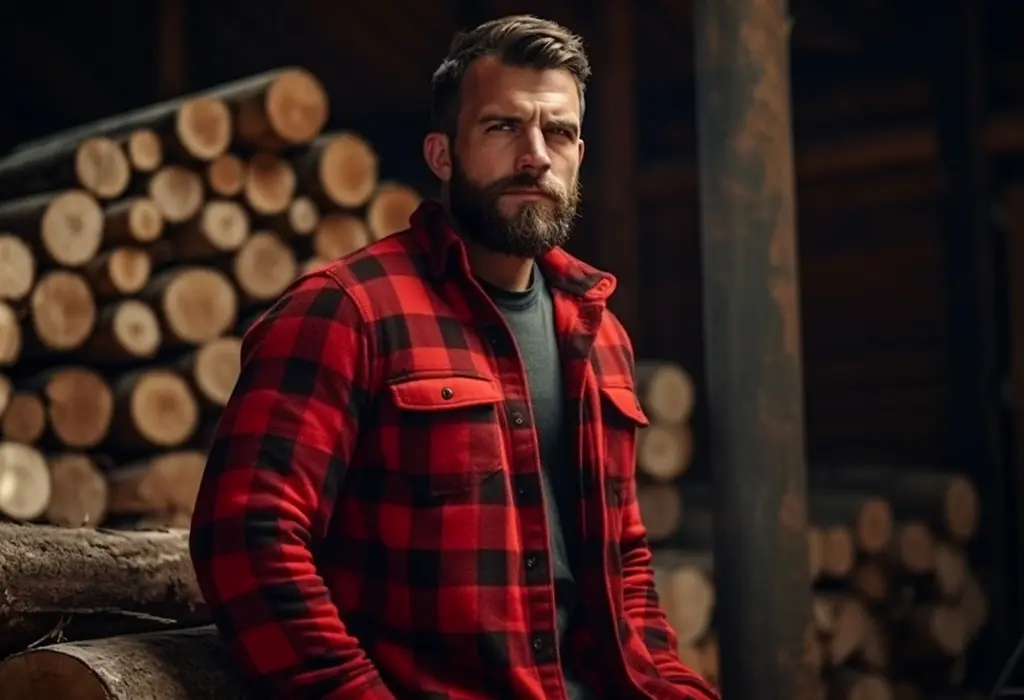
Overshirts were originally a garment worn by men that work with their hands.
When choosing an overshirt for manual labor, you'll want to choose a cut that is somewhat looser than you'd probably wear for casual social situations. Look for a shirt-jacket with large pockets for storing tools and other items. You'll also want to look for a thick, durable fabric such as flannel or canvas.
Simply wearing an overshirt with what you already wear when working outdoors will help you create a professional image. Check out this video for more working man style tips).
#5 Wearing an overshirt with a coat
It can be challenging to dress well in cold weather. The key is to understand layering.
An overshirt is an excellent middle layer when dressing for winter. For truly frigid conditions, you could pull on a warm synthetic base layer, then a crewneck pullover sweater, followed by an overshirt, and finally, an overcoat.
On the bottom half, wear long johns underneath gray flannel trousers and dress boots. Don't forget a pair of leather gloves and a warm hat.
Final Thoughts
Overshirts are a fantastic and flexible addition to any man's wardrobe, offering a stylish way to layer and adapt to various occasions and weather conditions. Once you know how to style overshirts, you can wear them in almost any casual situation.
For 3 Easy Fall Style Upgrades To Transform Your Look, check out this video:
FAQs: How To Wear An Overshirt
What exactly is an overshirt?
An overshirt is a versatile, shirt-like garment that's thicker than a regular shirt but lighter than a jacket, perfect for layering.
Can I wear an overshirt in summer?
Absolutely! Choose a lightweight, breathable fabric like cotton or linen for comfort in warmer weather.
Can I wear an overshirt for formal occasions?
Overshirts are generally more casual, but a well-fitted, neat overshirt can be styled smartly for smart-casual events.
What should I wear under an overshirt?
A plain t-shirt, henley, or a light sweater works great under an overshirt, creating a stylish layered look.
How should an overshirt fit?
It should be comfortably loose to allow layering underneath, but not too baggy. Ensure it's snug around the shoulders and offers ease of movement.
What are the best materials for overshirts?
Wool, flannel, and heavyweight cotton are popular for their durability and warmth, making them great for colder months.
Is it okay to wear an overshirt with a tie?
Generally, overshirts are more casual and might not pair well with a tie. For a smarter look, choose a more formal shirt.
Can I wear an overshirt with jeans?
Yes, overshirts and jeans are a great combination for a casual, rugged look.
Should the overshirt be tucked in or left out?
Overshirts are designed to be worn untucked for a relaxed, effortless style.
What kind of footwear goes well with an overshirt?
Depending on the occasion, both casual shoes like sneakers or boots and smarter shoes like loafers can complement an overshirt well.
How do I choose the right color for my overshirt?
Neutral colors like grey, navy, or olive are versatile, while bolder colors can make more of a statement. Consider what pairs well with your existing wardrobe.
Can I layer an overshirt with a jacket?
Yes, for extra warmth and style, you can layer a lighter overshirt under a heavier coat or jacket.
Is it fashionable to button up an overshirt?
Yes, wearing it buttoned up can create a neat, put-together look, but leaving it unbuttoned is also stylish and more relaxed.
Are patterned overshirts in style?
Definitely! Plaid or checked overshirts, for instance, are very trendy and add character to your outfit.
Can an overshirt replace a jacket?
In milder weather, an overshirt can be a great jacket alternative. For colder weather, it’s better as a mid-layer.
How do I style an overshirt for a night out?
Pair it with dark jeans and a crisp white tee for a classic, effortless look. Add dressier shoes to elevate the outfit.
Can older men wear overshirts?
Absolutely! Overshirts are timeless and suit men of all ages.
Is it okay to wear a backpack with an overshirt?
Yes, a backpack can complement the casual style of an overshirt quite well.
The post How To Wear An Overshirt – Men’s Style Guide appeared first on Real Men Real Style.
0 Commentaires